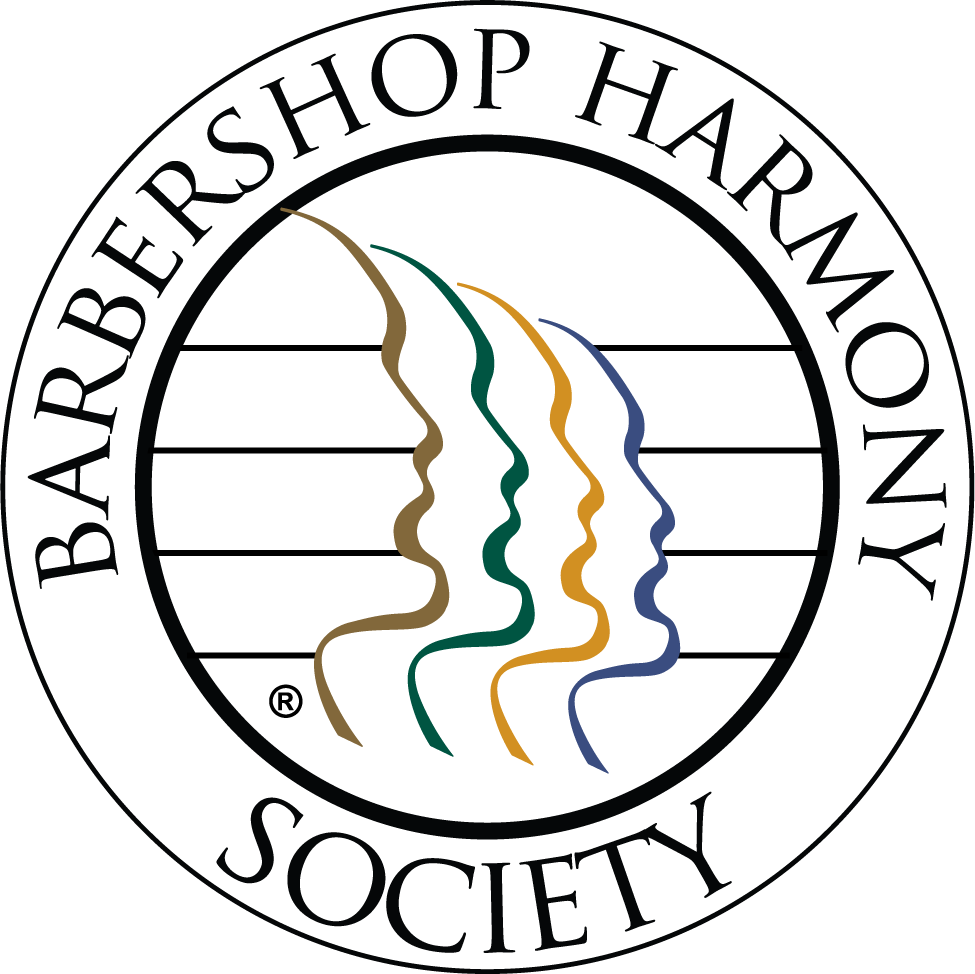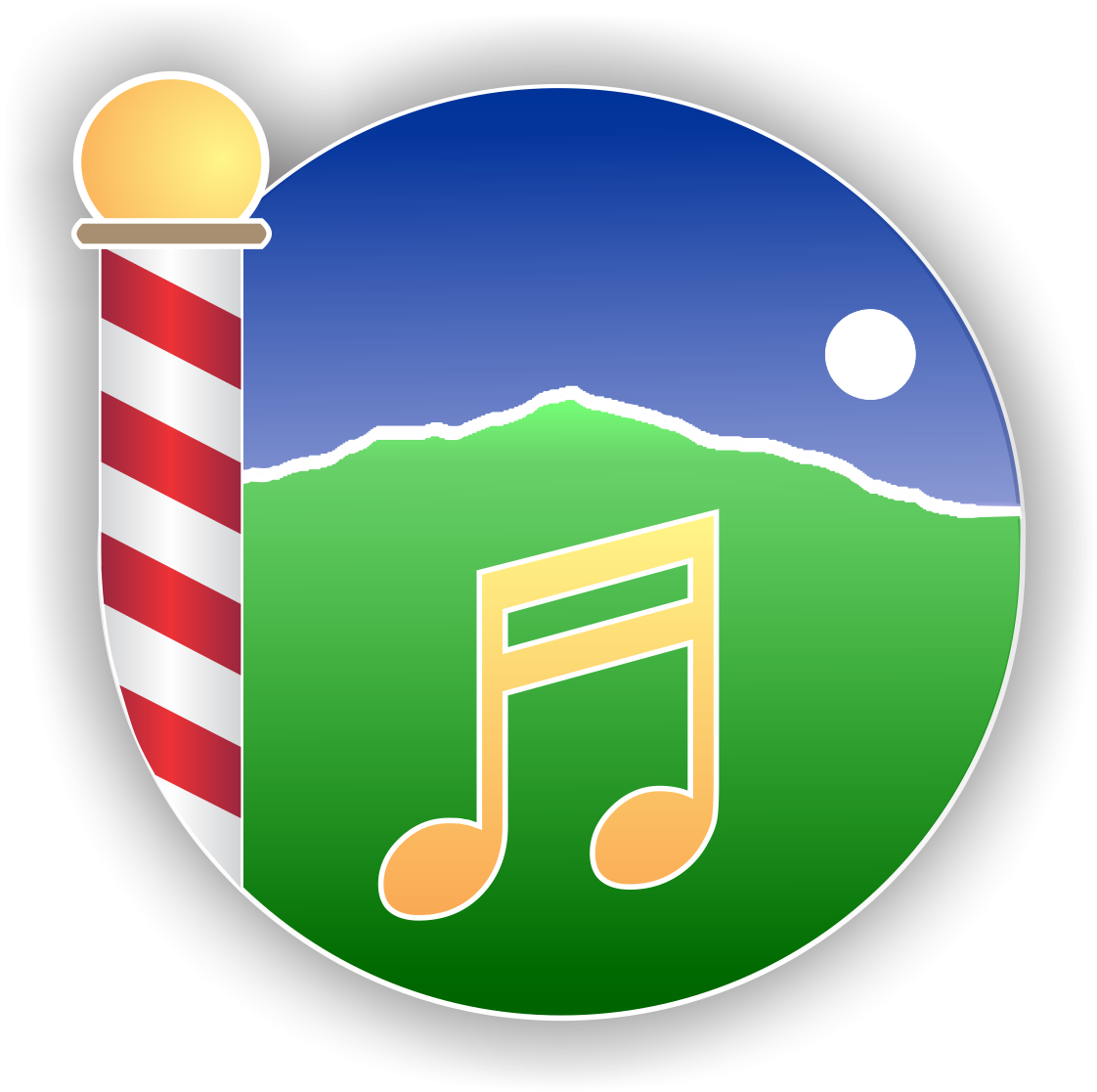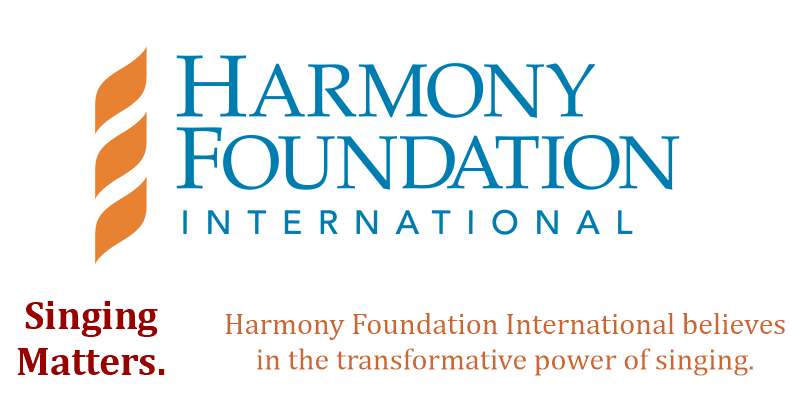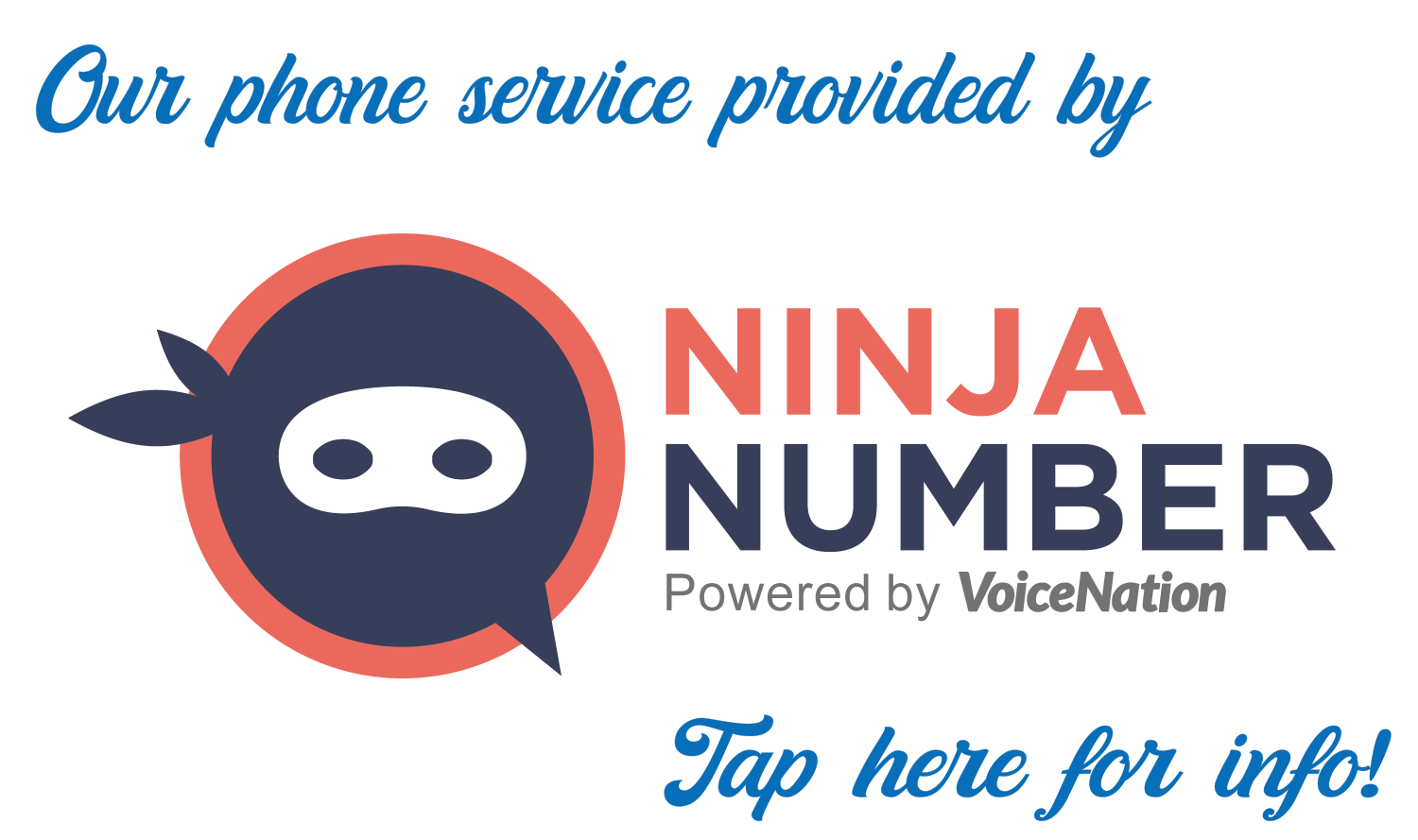Ready-Set-SING! Weekly Recap/Review
Below, find director MARK BROSSEAU’s
written recap/review of this week’s session:
Questions? or want some one-on-one consult time? Mark can be available for you! Please email or call him directly - and he’ll find some time for you both.
Mark R. Brosseau, Director, Keene Cheshiremen Barbershop Chorus
cheshiremanmark@gmail.com • 603-499-2684
Week 6 – CONGRATULATIONS Graduates!
June 20 - Finalé & Celebration, Performances, Food & Fun! • Thank you!
PHOTO courtesy of jude ketola / select for larger
Amazing, Fun, Done? Let’s Recap:
Tuesday June 20th was an amazing night for the Cheshiremen and I’m certain for our classmates of the Ready, Set, Sing! program for 2023. We were most fortunate and thankful for the use of the Crossway Church for the evening thanks to RS Singer, Dave Calhoun, who is a member of the church and made hosting the evening a joyful and relaxing time for all. We heard inspirational words and encouragement from our Marketing VP, Steve Salamin, who opened our final night with some insights on the program and some hints as to where this journey may take some of as individuals and many of us as newfound friends in harmony.
Craig Fisher guided us through some more breathing and warmup exercises and then we were right into things when Mark got the entire hall involved in spontaneous harmony on “Amen”. The Cheshiremen entertained us with the rousing Chordbuster March followed by UpGrayed Quartet (Mark, Craig, Steve, joined by John Devlin) breaking down 4-part barbershop harmony and part identification on the tag Through the Long and Lonely Night and then they showcased the barbershop sound by performing I Don’t Know Why (complete with cool moves, eh?) Then the chorus showed that a large group of grown men can be quiet and controlled by singing a very moving barbershop version of In My Room followed by our Barbershop Society motto song Keep the Whole World Singing 1-2-3 “It’s Great to be a Cheshiremen!”
Then our RSS chorus joined the Cheshiremen for a most beautiful and anthem-like performance of Can You Feel the Love Tonight which marked our goal for moving past the basics of singing and harmony into a full-on performance incorporating everything from the past lessons including the emotional hand and body motions that completed the performance to wild applause and appreciation. Folks that had not participated in all the classes were also in the audience too and they sang along with and cheered emphatically for our course ‘graduates’.
Then presentations were made of the prepared certificates of achievement, and an unexpected(?) encore of our performance song had everyone singing without the nervousness just minutes prior and everyone in the audience remarked about how wonderful the encore was and how much more emotional and meaningful it was post-graduation! We closed official proceedings and ample refreshments, fellowship, and even some tag singing followed.
Now this, from me, director Mark R. Brosseau – without the third person motif. I thoroughly enjoyed the challenges and successes as I and the Cheshiremen presented our RSS Program. The vision to use and modify the program came from chapter leadership and through a long process of the assessment of our ability to produce it and the projection of the need within our communities. It was wonderfully underestimated as evidenced by the initial responses and numerous sign-ups, and we adapted and moved forward with a sense of joy and fulfillment.
For me, teaching is truly a joy. Music is especially rewarding because of the personal aspects. It takes a desire and willingness by the student and a sensitivity and adaptability by the teacher. There were no products to sell, no end goals except criteria adapted to the needs of the class and for the individuals. That “singing is an extension of the speaking voice” and the truism of “out of my mouth and into my ears” made everything we covered accessible and proved possible beyond the basics. We may have done more than we all thought we would! To say it’s a proud moment diminishes the continuing results beyond the program. From one vocal coach and audience member, ‘We very likely changed the lives of some of the people in the program’; without a doubt, I agree and wish you all the encouragement and appreciation that comes from buying into a concept and meeting achievable personal goals, no matter how personally large or small. Singing is Life!
I wish to thank everyone for your acknowledgement through your card of thanks and the wonderful flowers (still alive and well on my desk at work). So many thanks to share but I will always turn the thanks back to you for every success. I am humbled and grateful.
So, Why Not Always? As promised here are two primary contacts:
For anyone wanting to continue with a couple more coaching sessions one-on-one with me, I am best reached as - Mark R. Brosseau, cheshiremanmark@gmail.com, 245 Apple Hill Road, Sullivan NH 03445, 603-499-2684. My first two additional sessions can be scheduled directly and will, of course, be free!
For anyone wishing to explore additional coaching opportunities (typically in a fee-based model), you should contact my dear friend, Joanne. She can help assess your needs and may accept you as a student herself or refer you to other coaches in the area. She is best reached as - Joanne “Jojo” Mead, jmm@ne.rr.com, PO Box 54, Keene NH 03431, 603-352-5018 and more information is at https://www.joannemeadvoice.com/
As always, please be patient as real-life constraints may take time for us to find the best times to get together. For now, remember to breathe well, stand comfortably, have confidence, and sing and move emotionally, catering to the lyrics and your own involvement. Sing Well, Serve Others, Have Fun!
Sincerest thanks and best wishes,
Mark R. Brosseau
Week 5 – June 13
For our final classroom evening we had more fun with warmups with Craig. He’s been keeping us engaged and stretched and reminding us Why Not Always! Mark added a new Singing Brain exercise after making sure we were comfortable and relaxed, ready for performing. After our few weeks together, now we OWN IT !
1-2-3-4-5, 5-4-3-2-1, 1-5, 4-5, 3-5, 2-5, 1-5, 4-5, 3-2-1, 1-5, 4-5, 3-5, 2-5, 1-5, 4-5, 6-7-8
Do-Re-Mi-Fa-Sol … Anyone?
Warmups continued with added, spontaneous, unrehearsed harmony singing “Amen” (which means “So be it”, “verily”, “truly”). Once we got the hang of it, we exercised some more vowels on Oh-men, Ahh-men, Ooo-men, Ee-men, etc.
The Cheshiremen Chorus Sang “I Love You Truly” to thank you for coming to RSS; We Love You! Thanks always to the Keene chapter for hosting this event.
Mark led us through learning another new and beautiful TAG: “Through the Long and Lonely Night” (see attached here) – how wonderfully rewarding to hear so many voices in harmony! Thanks to UpGrayed Quartet (Mark, Craig, Steve, John) for introducing each voice part.
Our final lesson began with a quick review of the many simple tips and tools for good singing we have introduced each week. Then, with John’s help, Mark went through The Motion Module, explaining types of movement in music (melodic, harmonic, dynamic, physical). That physical motion hopefully added the final layer to their duet and elicited an eMOTIONal response. What better way to add just one more simple thing to our RSS chorus song that will enhance the melody, harmony, and volume nuances to make our audience truly feel the music and have an elevated experience. Please review: Sway Body with Hands at Sides (for “Loo-loo’s”)
Hands Up/Palms Forward (for “Can You Feel”)
Hands and Arms Return to Sides, palms up (for “Where We Are”)
Hands to Face for Eye Pop (for “Wide-Eyed Wanderer”)
Hand/Arm Travel from Out to In (for “That We Got This Far”)
Hands Cupped to Return to Sides (for “Laid To Rest”) reminder that volume lowers too!
Hands Up/Arms Fully Up (for final “Can You Feel”) volume is up too!
Don’t forget to sway and bring the volume down for the next-to-last “Loo-loo’s”
The last “Loo-loo’s” we are still, hands to sides, then slowly lower our chins keeping eyes on the director for the cut-off (cue to stop singing)
HOLD that pose until Mark releases the chorus to get back Down-the-Tiles
Acknowledge and enjoy the applause!
And then, it happened… the director dropped the bomb. We would tonight and next week surrender our music for performing “Can You Feel the Love Tonight!” Fortunately, we all have been doing the necessary homework of listening to the teaching media, memorizing, rehearsing from the back of the song, and often. So, we’re off music in just 4 weeks; even the Cheshiremen can have trouble with that (but we also try to keep about 20 songs memorized and ready to perform).
Lastly, we rehearsed our song, complete with harmony and hand motions, standing as a 4-voice-part chorus, performing together! Sorry about the confusion of how to stack the chorus (where the parts stand). We’ve often made changes to how the Cheshiremen stand to realize better harmony for certain songs. Please review the attached sketch (performance sections) on where all the parts will stand for the performance next week. It does not match what we did last week but is the preferred stack for Week 6. With this arrangement, guests will be right next to their Cheshiremen counterparts and the most important duet in barbershop harmony (the Lead-Bass) will be close physically which will help harmonically. Further, how beautiful it will be to see those fields of red and white as we perform in our concert ‘uniforms’ (Cheshiremen in red over black, RSS guests wearing white -or- white over black). No neckties since this is generally an informal musical medium. Relax and have fun!
I trust your time with the Cheshiremen and the Ready, Set, Sing! program has been rewarding and fun. Next time you see signs for “Singers Wanted” I hope you will feel excited and prepared to participate. I have enjoyed teaching and working with you all. Many thanks for making “out of my mouth and into my ears” a truism and especially for sharing your time and exploring your talents together. See you very soon!
Week 4 – June 6
After warm-ups with Craig we engaged your Singing Brain with the “Class A Handclap” – it’s a call and echo exercise to shake off some of the dust of the day and to prepare those synapses for learning. [1234, 12, 12, 1234, 12, 12, 1234, 1234, 1].
We’re still having fun with our Alien Mashup exercises using Ni, Na, Nah, Noh, Nu with the “Close Encounters” theme and sounding like “Mork from Ork”. Silly as it may seem, we’re training open vowels, more “Ahh” in every vowel, and reinforcing learning by rote through call and answer.
We played TAG again! Our first week together we heard the Cheshiremen sing “Down Our Way” which may have been the first time our guests have heard the barbershop style, hopefully setting the stage for desiring to sing that way all together. Week 2 we had UpGrayed quartet demonstrate 4-part barbershop harmony by singing “Love Me Darling”. Week 3 we all tried the tag “Around” ringing church-like harmony together. And week 4 we nailed another tag on “Dixieland” and even got our first no-fear all-guest quartet to brave it alone! Thanks times four to our fellow choristers for stepping up and singing out; well done!
In class we reviewed the lessons from previous weeks and added to last week’s concepts of resonators by introducing the “Dirty Sniff” while breathing in through the nose which forces the upper resonators open (mouth, nose, and sinuses). We also closed our lips, pinched our noses, and gently applied some air pressure to clear our ‘ear tubes’ and equalize pressure – allowing us to hear better, allowing us to hear pitches (notes) to stay better in tune with each other.
select image for larger
I introduced some concepts about how “Singing Is Good For You” that should encourage us all to sing more – the benefits are a big deal and the path to the benefits is to simply sing well and more often. There are studies that go a step beyond about singing in ensembles or a chorus – when properly engaged, members of a singing chorus actually have synchronized heartbeats, not just singing together but truly living together in harmony!
What was with the HATS? Top Hat (formal / expectations?), Fishing Hat (Very Relaxed / expectations), Fedora (aha moment ala Sinatra / expectations?) Remember that a confident and capable singer is what you are showing your audience and emoting on stage. Own what you know and deliver consistently and comfortably.
select image for larger
We introduced and played with DIPHTHONGS – from Ancient Greek meaning “two sounds”, it is a sound formed by the combination of two vowels in a single syllable, in which the sound begins as one vowel and moves toward another as in COIN, LOUD, and SIDE. NOW = Nah, ooh, YOU = Eee, ooh, DAY = Deh-ee, AWAY = Ahh, weh, ee TONIGHT = Too, nah, eet. Remember the FACE picture and examples. Diphthongs can happen at the beginning of words too as in: WIDE = Ooh, ahh, eed, WHEN = Ooh, ehn, ONE = Ooh, ahn (or uhn), and my favorite WOW – Ooh, Ahh, Ooh.
We learned about liquid or singable consonants and how they are generally not preferred. Especially with R’s - don’t do it! (there’s a calm surrenderrrrr, that we got this farrrr). Let the vowels ring (AEIOU-Y) by not singing the consonants (LRNM etc).
Lastly, we explored the concepts of pitch and making a note SHARP or FLAT. Our goal for singing together is to be “on key” or “in pitch” and not letting the in-tune sound drop or go down FLAT, or lifting upward and away from the pitch by going SHARP. The more we listen to each other, match pitch, and stay on key, the more Ahh-portunities there will be for amazing, satisfying harmony.
Next week is Week Five – we’ll be putting it all together: great warm-up, supported breathing, subtle and confident stance, Down-the-Tiles, and all the smiles. We’ll take our unifying pitch on “Doo” and move into our singing stance on another “Doo” breaking into 4-part harmony. Please remember to watch the director’s hands for steering us together through “Can You Feel the Love Tonight” at his pace and with controlled volume so that the story builds with energy and excitement, ending quietly and almost prayerfully.
SELECT IMAGE ABOVE FOR LARGER
What could be left? In session we’ll cover adding simple body and hand motions to the performance. If we can manage it, the result will be unforgettably emotional! Don’t panic or be worried about more things to memorize because if you treat the director as a mirror (minus the volume messages at his hands), I’ll do the hand and body stuff too and all you have to do is copy and sing.
Need a copy of the chart of TAGS you’ve been learning and singing in class??
Look here! >>>
Week 3 – May 30th
It’s great to have so many people coming back each week – we’re halfway there! We’ve been joined with a few new folks every week too. Warmups and stretchy stuff with Craig, adding some harmony with Mark, and then we learned and sang a TAG together (a short, sweet, beautifully harmonic demo or test of singing 4-part harmony). This week the tag was “Around” (Now That You’re Around) featuring the basses holding their ground while the upper three parts sang much higher above their notes. It’s a great tag, very easy, and has a very churchlike feel, hopefully satisfying and “Why Not Always?” leaving everyone wanting more.
We rapid-fire reviewed the concepts for good singing from week 1 and week 2 and emphasized the importance of having enough air in your tank to have a resonant, supported sound without running out of breath too soon. It’s simple but needs daily practice since for most, it’s a new toy.
I was asked, “When do I breathe when singing?” which is a great question with 4 easy answers. When singing a song (words and notes) the best places to breathe are:
At commas
At periods
After a phrase completes a thought or message
When you need to!
Week 3 covered the Highs and Lows
Let’s not worry about the science too much but blowing into a trumpet or a tuba actually take the same tank full of air, but one is high, the other low because of the size of the tubing that follows. Equate that loosely to your body and vocal cords and add pressure to get things vibrating quickly for high notes and slower for lower. Throw that silly imaginary box on your head to align your stance, breathe deeply, theatrically (add small arm motions to offset tension), and sing without adding too much muscle rigidity. Again, singing is an extension of your speaking voice and you don’t have to exert much effort to speak, so singing should be nearly as relaxed and with practice, reflexive and comfortable too.
We chatted about the body’s resonators and concentrated on keeping the four main ones open: the throat, mouth, nose, and sinuses. We “Ni, Na, Nah, Noh, Nu’ed” with tight facial/resonator placement and Jerry Lewis’ed and Gomer Pyle’d most unpleasantly. We threw our tongues out and opened everything up, but it was a bit ugly! Drawing our tongues back in, keeping the open, resonant “Ah” in every vowel, we put the tip of the tongue at the gum line of our bottom front teeth and sang warmly and openly with resonance. What a difference!
Our studies continued in Italian?
Geppetto: older voice but mostly unsupported, long singing sound but not enough air
Pinocchio: very young, high-pitched voice but not great supported singing, more like barking and staccato (picky, short notes)
Jiminy Cricket! Mature, resonant, capable of high notes effortlessly.
I demonstrated our newest toy by singing “When You Wish Upon a Star” highlighting that low/resonant sound. But there was a necessary (and hopefully beautiful) new technique at the phrase “Like a bolt out of the blue, Fate steps in and sees you ‘through’… ”
Falsetto! which is the technique or name for the kind of singing happened on “through”.
We talked about the like-speaking CHEST voice and explained the HEAD voice or falsetto voice and practiced it, aiming higher and higher.
To keep from yelling on higher notes or to sing higher than your comfortable speaking voice, we’ll have to find a way to make those notes beautiful by practicing, remembering all notes need that full tank below them to remain strong and convincing.
We discovered our own BREAK – that spot when going from low to high notes or the other way when our voices crack and sound like a teenage boy as his voice inevitably changes over time. We sang and played with GLISSANDOS which is that fluid singing low to high or high to low like an emergency siren. Somewhere in there, and it’s different for everyone, your voice will crack or reveal your break. Find it and sing around it, singing notes just a bit higher or lower, practicing your best to smooth out the break and trying to make the transitions from chest voice to head voice sound about the same. Alternately, we tried singing “Somewhere Over the Rainbow” starting low and beginning higher until we were forced into falsetto. Again, it will be different for each singer and it’s new so, don’t be discouraged while getting used to these new techniques. I heard everyone doing it and we had fun and smiles throughout!
Lastly, we came together with the chorus and sang our performance song. Prior, I asked for your constant attention, decorum, pliability, and patience. I asked you to read your sheet music while keeping eyes on the director and my hands. The gestures I shared for volume, timing, and cut-offs will keep us singing together and allow me to mold all the musical moments for what will always be a rewarding performance.
Remember, you don’t need to be too immersed in the sheet music as many of us learn by rote – listening and echoing back, repeating as heard. The quicker you commit the notes and words to memory, the more “Ahh-portunities” arise for beautifully crafted, cooperative singing by just being in the singing and performing moments, undistracted by sheet music and lyrics to read.
Week 2 – May 23
Warmups began at 6:30 and went to 6:45. We heard from UpGrayed quartet on the “Love Me Darling” tag (a short snippet of the end of a song) illustrating the four isolated voice parts in Barbershop Harmony and had the chorus show how that sounds with more voices.
We reviewed the teaching media and got the tenors the correct tracks and helped a few folks get techy with the challenges of getting it all to work.
The Week-1 review covered a relaxed stance, some breathing basics, and demonstrations to show that singing is an extension of speaking and should be nearly just as easy.
The alien horde is getting the message about “Ni, Na, Nah, Noh, Nu” and we’re all singing with confidence and on pitch now so, keep looking for the mothership to land soon!
Week-2 was about developing a lack of tension and getting easy tricks for better spine and shoulder alignment. (If you don’t want to use an imaginary box to place on your shoulders, milk crates are light and see-through, mostly.)
Remember that breath is the fuel for singing and tones need to rest on a cushion of air. Singing just needs supported air (a good amount of it like a fully inflated balloon) and a release, keeping your airway open and gently emptying the tank. Sadly, the cheap balloon trick wasn’t much of an illustration or as much fun as seeing the chubby guy fiddle with it!
We managed to leave behind our third-grade renditions of “My Country ‘tis of Thee” (broken up by unnecessary breaths) and managed to sing all the way through the end of the lyric “of thee I sing” before drawing another breath. Well done everyone!
We forgot about Down-the-Tiles for one night, but we’ll get back to that next week. We busted some barbershop chords on Doo-Ahh and added wonderful harmony as we put as much “Ahh” into every vowel, even the nasty, grimacing “ih” and “a” sounds.
Lastly, we rocked our way deep into all the pages of Can You Feel the Love Tonight and even encored ourselves with verve, singing this beautiful anthem with feeling and harmony. Thank you!
Just a couple of notes about that process overall: We’re a big group so please remember, even though it’s exciting coming together for the chorus part of the evening, I’m still hosting, teaching, and directing and I need your best attention, decorum, pliability, and patience as I wrangle this wonderfully large group of people. Keep your ears up for my voice and eyes on me. I’ll review this again next week and show you the signals and hand motions that you’ll need to watch to keep us together at appropriate volumes and tempos (speed). In performance, barbershoppers rarely use sheet music so keep listening to your learning tracks and work on memorizing the song so your hands will be free for an eMOTIONal Week 5 and our performance together Week 6.
Want more? Week 3 is coming and we’ll address more about the mechanics of breathing, singing, and vocal chords and illustrate “the break” and talk about vocal range and exercises, head voice, chest voice, falsetto, Geppetto, Pinocchio? Meanwhile, breathe more, hold it longer, let it out slowly, sing more, have fun! I truly look forward to seeing you next week.
Week 1 - May 16
Week 1 was amazing. We exceeded our expectations for the number of folks that came to see what our program was all about. That did take some extra time for voice placement (what part you may be vocally aligned to sing), and I thank you for your patience as we adapted on the fly. By now, you have access to the learning tracks for “Can You Feel the Love Tonight” and will have received an email for questions and follow up. We’re moving along!
To recap Week 1:
We covered “Posture” or a comfortable stance, some basic concepts for breathing, and how singing should feel comfortable as an extension of speech.
We took good breaths and exhaled theatrically, stirring the air or raising your arms to about waist height and returning them to your sides as you let the breath out. We practiced taking in air, holding it, taking in more, holding it and letting it slowly out.
We introduced “Ni, Na, Nah, Noh, Nu” to avoid singing words and to get that “N” in the front which results in a gentle release of the vowel sounds that follow. Remember poor Steve at the bottom of the cliff? “Are You OK?” must have good breath support (take in a lot of air) and needs some gentle pressure and projection (volume) for him to be able to hear you from way up there. Now tell him “Ni, Na, Nah, Noh, Nu” and sing it to him. He’ll understand but anyone around while you’re practicing will think you’re weird!
We sang! “Mary Had a Little Lamb” was easy and resonant. Why? We all knew the words and we had prepared to sing together with good craft and exercises.
You gotta have parts… We figured out how you sound and sing and assigned you to one of four voice parts. From the top down: Tenor – the gentle high notes in harmony above the melody. Lead – the lovely melody or tune singers (what everyone recognizes when you hear something familiar like “Happy Birthday”. Baritone – the mellow, necessary middle notes that can be above or below the melody. Bass – (pronounced “base”) the lovely low notes that are the foundation of great harmony. As we progress, we may discover that you may want to change to a different part. No problem, talk to me and we’ll figure it out.
And more? Yes! We all learned “Down the Tiles” and how to take a barbershop chord (that beautiful 4-part sound) on “Doo Ahh”. What a great sound, and a wonderful look! We’re already performing together!
For Week 2:
We’ll review much of Week 1 which will move right along. We’ll add some tips for removing tension and maintaining good body alignment. This week we expect to be back on track for ~20–30-minute sessions before joining the chorus while learning our song for up to 15 minutes together. Then break, refreshments, and stay if you want to observe the rest of the chorus rehearsal or take your energy home and practice every day!
Ready Set, SING! Is a free program for introducing the basics of good singing and finding your voice. If you’re having fun, that’s great! If you have questions or want some one-on-one coaching, I’m happy to help you. Throughout the program, please contact me via email or by phone and we can chat about your questions. After our 6 weeks together, I can meet with you privately and offer some tips for whatever you may need for comfortable, effective vocalizing. Further, we know some awesome vocal coaches in the area if you find you want to move into paid programs and productions.










